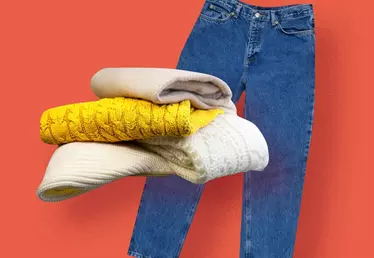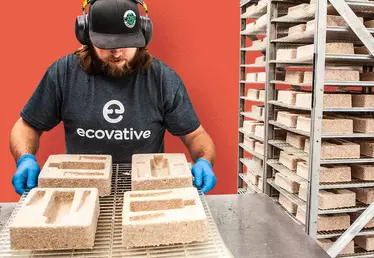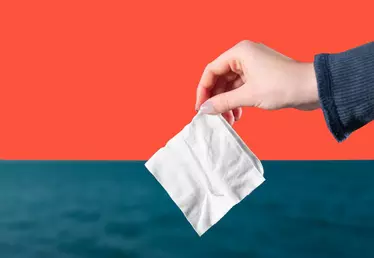

Hero banner custom title
4 easy ways to make your wardrobe more sustainable
4 min
Fashion is one of the world’s most highly polluting industries. According to France’s Environment and Energy Management Agency, the sector accounts for 10% of total greenhouse gas emissions and is the world’s third leading consumer of freshwater supplies. It also has a significant social impact, as witnessed by the 2013 Rana Plaza tragedy. Hence the growing interest in sustainable clothing – which can be identified using the four following tips.
Pay attention to the label
This is the best way to find out what materials have been used to make a particular item of clothing – and to try and avoid oil-based synthetic fibers like polyester or acrylics. As warned by Eloïse Moigno, co-founder with Thomas Ebéléof the SloWeAre label and author of a book entitled The hidden face of labels, "Certain artificial materials like viscose come from plant matter but their transformation process requires the addition of chemical substances…The most interesting materials are either natural organic ones like linen, a crop plant requiring little water, or recycled textiles such as cotton, wool, or Tencel, an environmentally-friendly material made by combining wood pulp with a non-toxic solvent". Similarly, it is also worth noting how much easier it is to recycle a garment made out of a mono-material.
Learn to navigate the sea of labels
In Change of fashion (Eyrolles), Mathilde Lepage - creator of the @MakeMyClothesGreatAgain Instagram account – offers inquisitive eco-consumers two key tips. Firstly, they should always seek to determine who controls a particular label, ensuring that it has been issued by a bona fide (i.e. external and neutral) certification body. Otherwise, it is important to ascertain what exactly the label guarantees (what it requires, at which stages), what it does not guarantee, etc. Reputable environmental labels include Global Organic Textile Standard (GOTS), EU Ecolabel, Oeko-Tex Made in Green – or in the fair trade space, bodies like Fairtrade-Max Havelaar and the Fair Wear Foundation. Otherwise there is the Global Recycled Standard (GRS), which certifies that at least half of all fibers used in a particular garment come from recycled materials.
Prefer local suppliers
The idea here is that consumers should always gather information about brands they’re interested in, or at least ask their retailer about it. What Lepage advises people in France, for instance, is that they rely on the country’s Terre Textile label, which certifies that 75% of an item’s manufacturing took place in France and that eco-friendly processes were involved. Similarly, she recommends the Origine France warranty guaranteeing that 50 to 100% of an item’s return cost was incurred in France. It remains that neither of these labels ensures that an item is organic in nature, or even where it was originally sourced.
Pay special attention to item quality
According to Moigno, "The best garment is one that lasts. Does it have a lining? Is the stitching tight and robust? Have the buttons been sewed on securely? Do the zippers work? It’s also worth folding the item in half to ensure that it’s symmetrical while also checking for fabric thickness. After all, the thinner a fabric, the quicker it wears down”.
Lastly, consumers are increasingly being asked to reassess their own motives and question whether they truly need a particular item of clothing. This is in line with the Greenpeace finding that, on average, people will wear less than one-third of their entire wardrobe over the course of a given 12-month period.











